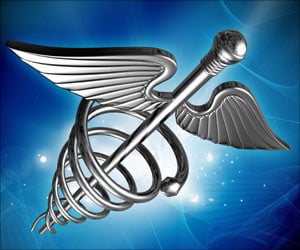- Plasticizers are present in plastic tubes & catheters used as medical accessories
- They can interact with the cardiac cells and disrupt their electrical activity
- This can cause abnormal heart rhythms, also known as arrhythmia
This preclinical study, published in Circulation: Arrhythmia and Electrophysiology, was led by Dr. Nikki Posnack, PhD, who is a Principal Investigator with the Sheikh Zayed Institute for Pediatric Surgical Innovation at the Children’s Research Institute and an Assistant Professor of Pharmacology & Physiology, George Washington University School of Medicine and Health Sciences, Washington DC, USA.
The first author of the paper was Dr. Rafael Jaimes, PhD, who is a Staff Scientist at the Children’s Research Institute, Washington DC, USA.
Read More..
Phthalate and Its Effect on Health
Phthalates are esters of phthalic acid, which are primarily used as plasticizers. The main function of plasticizers is to soften plastics such as polyvinyl chloride (PVC). They make plastics more malleable, flexible, durable, and transparent.Two common types of phthalates are mono-(2-ethylhexyl) phthalate (MEHP) and di-(2-ethylhexyl) phthalate (DEHP). DEHP is commonly used to make plastics more soft and pliable, which are used in medical accessories such as plastic tubing. It should be noted that DEHP accounts for 40 percent of the weight of plastic bags used for storing blood and 80 percent of the weight of plastic tubes, used for assisted feeding, artificial respiration, and catheters for cardiac surgery.
Despite its industrial usefulness, it has been documented based on epidemiological studies that phthalates can have adverse effects on health. Studies have shown that exposure to phthalates can lead to inflammatory conditions, metabolic disturbances, neurological disorders, reproductive problems, as well as cardiac abnormalities.
Background of the Study
The present study is based on previous studies conducted by the same research group. These studies revealed that in cardiomyocyte models, the cellular electrical coupling was reduced by exposure to DEHP, which slowed the conduction velocity of electrical impulses, resulting in the development of arrhythmia.Further studies, using microarrays showed that DEHP treatment of cardiomyocytes led to changes in the levels of mRNA, which affected calcium transport, resulting in abnormalities in cardiac muscle contraction. Another preclinical study found that DEHP interfered with the regulation of cardiovascular function by the nervous system.
Study Findings
The major findings are highlighted below:- Exposure of in vitro heart models for 30 minutes to MEHP, a metabolite to DEHP, resulted in an increased risk of irregular heart rhythms
- The effect of 60 µM of MEHP (equivalent to that present in stored blood used for pediatric blood transfusions) on the heart was studied
- Exposure to MEHP for 30 minutes reduced atrioventricular (AV) conduction velocity and increased AV node effective refractory period
- MEHP prolonged action potential duration and increased action potential triangulation
- MEHP increased the ventricular effective refractory period
- MEHP reduced the epicardial conduction velocity
Explanation of the Study Findings
Phthalates have a similar chemical structure to hormones, as a result of which they can interfere with various biological processes. These low molecular weight chemicals are capable of interacting with ion channels, cell membrane receptors, nuclear receptors, as well as other targets in the cell. For example, they can cause inhibition of NaV1.5 voltage-gated sodium (Na) channels present in cardiomyocytes, which disrupts the flow of Na+ ions through these channels. These types of interactions could explain the changes observed in the preclinical heart models.Implications of the Study
Cardiology researchers at the Division of Cardiovascular Medicine, University of Wisconsin-Madison in an accompanying Editorial entitled “Shocking Aspects of Nonconductive Plastics”, note that although the clinical effects of plasticizers on the heart still needs to be studied in greater detail, the findings of the present study adds to the accumulating evidence that MEHP and DEHP are not inert, but possess chemical activity.“Toxic plasticizers in children’s toys and baby products hit public headlines 20 years ago, but exposure to these compounds is up to 25x higher in patients undergoing complex medical procedures,” write the University of Wisconsin-Madison researchers. “We readily (and unknowingly) administer these compounds, and at times in high quantity, to some of our most vulnerable patients. This work highlights the need for further investigation into short and long-term plasticizer exposure on cardiac electrophysiology.”
Future Plans
The research team plans to build upon their current findings by using larger preclinical models and eventually carry out human testing. They plan to use stem cell-derived cardiomyocytes to compare the activities of plastic chemicals with other alternatives in order to assess their safety profile.Concluding Remarks
“It’s important to note that this was a preliminary study performed on an ex vivo model that is largely resilient to arrhythmias”, says Jaimes. “Due to the nature of the design, it was somewhat alarming that we found such significant effects. I predict that electrophysiological disturbances will be more pronounced in models that more closely resemble humans. These types of models should absolutely be studied.”Posnack adds: “And, importantly, our results may incentivize the development and use of new products that are manufactured without phthalates.”
Funding Source
The study was funded by the National Institutes of Health, the Children’s Research Institute, and the Children’s National Heart Institute, USA. NVIDIA Corporation, USA, provided the graphics processing units, with partial support by the General Directorate of Scientific Policy of the Generalitat Valenciana (PROMETEO 2016/088), Spain.Reference:
- Plasticizer Interaction with the Heart - (https://www.ahajournals.org/doi/10.1161/CIRCEP.119.007294)
Source-Medindia











